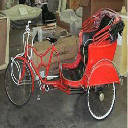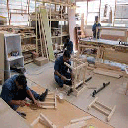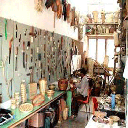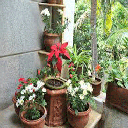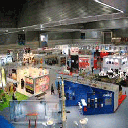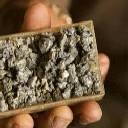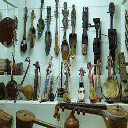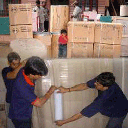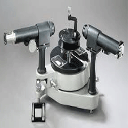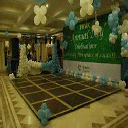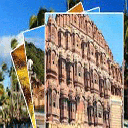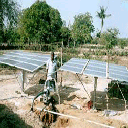Lakshadweep also called as Laccadives gained prominence among the seafarers only after arrival of the Portuguese in India. It was known for its finely spun coir. One of the world’s most spectacular tropical islands, Lakshadweep Island is located around 220-240 km off the Malabar Coast (Kerala). As it is close by to Cochin Lakshadweep Tourism support concentrates mostly in and around Cochin. The islands comprise of 4200 sq.km. of lagoon rich in marine wealth and 36 islands in an area of 32 sq.km. Each island in Lakshadweep is fringed by snow white coral sands. The crystal clear water and the rich marine flora and fauna enhance the mystique of these islands. Against the vast blue sea the Lakshadweep islands look like emeralds. The huge wall like reef bordering the outer side of the shallow lagoons blocks the incoming swells of the sea. A large conglomerate of thirty six exotic islands that represent a variety of biological species, the beautiful island of Lakshadweep casts a magical spell on the tourist with its bewitching beauty. The capital of Lakshadweep, Kavaratti is endowed with the blessings of nature. The golden sandy beaches, crystal clear water of the Arabian sea and the tall coconut trees bordering the shores of the deep blue sea of Kavaratti captures the imagination of the poet. Each island of Lakshadweep or Laccadives, a tiny principality in itself, has existed from time immemorial, with little influence from the outside world. The charm of the Tourism Island called Lakshadweep islands lies in their remoteness. Far off the beaten track, they attract no hordes of merry makers to its shores, or perhaps it is the beauty of the islands densely covered with coconut palms, and threaded by an unbroken line of creamy sand, each island serenely set in a sea whose waters range from palest aquamarine and turquoise to deepest sapphire and lapis lazuli. Blessed with an unparalleled natural beauty, the exotic coral reef island of Lakshadweep is an interesting blend of scenic beauty coupled with modern infrastructural facilities that draw several tourists across the globe. An important tourism hub, the local people of Lakshadweep mainly depend on the traditional industries of fishing, coir making and cultivation of coconut to earn their livelihood. Lakshadweep is easily accessible by air or water. Equipped with excellent infrastructural facilities, the coral reef island of Lakshadweep extends a warm welcome to all the visitors. Lakshadweep provides the tourists with a plethora of water sports that enables them to explore their latent potentialities and sportsman spirit. For administrative convenience, Lakshadweep is further sub divided into several districts. Supported by efficient administrators who are appointed by the central government for the Union Territory of Lakshadweep. More than a hundred sects of tribal communities have found a home on the islands of Lakshadweep. The excellent craftsmanship of these tribal people has also made them popular across the globe. Looking at the huge population of these tribal communities in Lakshadweep, the island can well be referred to as a tribal dominating area. A group of scheduled tribes also add to the density of tribal population here. Aminidivi, Koyas, Malmis and Malacheris are the chief tribal communities that populate the islands of Lakshadweep. It is believed the first tribe that arrived here is the Aminidivis, named after Amini, the island where they began living. All these tribes have their distinct status in the community. There are many theories as to how the huge archipelago, the Lakshadweep group of Islands emerged. The most widely accepted one is attributed to Sir Charles Darwin, the renowned English Evolutionist (1842). As per his opinion the base of the islands below the reef is a volcanic formation over which corals settled and formed into fringing reefs. These turned into barrier reefs and later to atolls due to the geological submergence of the volcanic base. By several accounts, the cultural and geographical affinities of Lakshadweep are closely linked to Sri Lanka, Kerala, Maldives and Tamil Nadu. The whole group of islands is one vast coconut garden with hundred trees crowded per acre. The name “Laksha†is only symbolic since the total number of Islands doesn’t even add up to a 1000. The word “laksha†means 1,00,000 in Malayalam and Sanskrit. But it has other meanings too. For example, “Lakshya†means “Target†and Lakshadweep lies in the hub of the most sensitive Arabian –African-Asian trade route. All visitors are (Both Indian & Foreign Nationals) to Lakshadweep Islands require Entry Permit. For arranging the entry permit, the following details should be submitted at the time of package reservation. Foreign Nationals - Full Passport Details viz., Full Name, Nationality, Permanent Address, Passport Numbers, Date and Place of Issue, Date of Expiry, Date and Place of Birth. Domestic Visitors from India - Full Name, Age, and Full Address, Occupation & Date of Birth. Festivel of Lakshdweep Majority of the people are Muslims in Lakshadweep. So almost all the Muslim festivals like Id-ul-fitr, Bakri Id, Milad-Ul-Nabi and Muharram are celebrated with great gusto here. Id-ul-fitr:Popularly known as the Festivals in South India of the breaking of the fast, Id-ul-fitr or Eid-ul-Fitr is observed as soon as the new moon is sighted at the end of Ramadan or month of fasting. It is a festive occasion. On this day special food and delicacies are made and distributed to neighbors and friends. Bakri Id:It is a festival of sacrifice. This South Indian festival is observed to pay homage to Prophet Ibrahim's readiness to sacrifice his son for God's sake. On this auspicious day special prayers are recited by thousands of Muslims for peace and prosperity. Not only this, it is a festival that marks the completion of pilgrimage to Mecca. Milad-Ul-Nabi:On this day Muslim communities throughout India celebrate the birthday of Prophet Muhammad. They take part in religious services and prepare delicious food and delicacies for the day. Muharram:is not about festive celebration. On this day people mourn the Karbala tragedy when Imam Husain, grandson of Prophet Muhammad, was martyred. To observe this day of mourning, luxuriously decorated taziyas which are the replicas of martyr's tomb are carried through city streets. People beat their chests and lament over the murder of Imam Husain. Literacy rate is 87.52% ( males : 93.15%; females : 81.5 6% ). Though various steps were taken immediately after the independence like supply of books, midday meals, award of scholarship etc. to improve the standard of education, not much progress could be achieved till 1956. Students studying at Calicut were provided free hostel accommodation at the Harijan Hostel. After the reorganization of states in 1956, this was made an exclusive hostel for island students and functioned at Elathur near Calicut till 1963. Today there are three hostels attached to senior secondary schools one each in Andrott, Kadmat and Kavaratti. All these measures led to the rapid increase in the number of graduates and technical personnel in the islands. The 1971 census revealed that there were 213 degree holders and technical personnel in Lakshadweep. The islands have been by leaps and bounds since independence. In 1951 the literacy percentage was 15.23 and now it is 87.52 % occupying the third position in the country. Up to 1956 there was only one graduate. Now there are about 5200 matriculates, more than 350 graduates, 70 postgraduates, 120 Engineers, 95 doctors and scores of students studying in other disciplines. Now all children of school going age have access to schools and out of the total student population 47% are girls. Important Cities, Town and Religious / Tourist Places : Agatti, Amini, Andrott, Bangaram, Bitra, Cheriyam, Chetlat, Kadmat, Kalpeni, Kavaratti ( headquarters town ), Kiltan, Minicoy Suheli, Tinakara, Valiyakara.
Minicoy Tower House:One of the most impressive sights of Minicoy is a 50 meter tall Lighthouse, built by the British. Netaji Subash Chandra Bose hoisted the tricolor flag to proclaim Independence on 30th December 1943 at a place near this three-storied jail where inhumane atrocities were done to the said-convicts or the most influential freedom fighters. It also houses a Museum, an Art gallery and a Photo gallery. Ross Island, the erstwhile capital of Andaman Islands during the British Raj period houses the colonial ruins of old buildings like Ballroom, Chief Commissioner's House, Govt. House, Church, Hospital, Bakery, Press, Swimming Pool and Troop Barracks that are all in dilapidated condition. The tower was constructed in brick masonry and the black bricks used were as hard as stone, which were specially brought from "Birmingham of England and special adhesive compound from Holland". The construction of Light house was completed in March 1884 and lighting equipment consisted of a kerosene wick lamp enclosed by a lantern was installed in December 1884 by a skilled mechanic from London. The light house was formally commissioned on 2nd February 1885 in the presence of Amin of Minicoy and Sir James Douglas who had specially come from England . In 1928 the wick lamp was replaced by Petroleum Vapour burner increasing luminous intensity considerably. Though the location of Light house was decided upon in 1882, the building construction started in 1883 and finished in 1885. The light was visible up to Nineteen miles. Minicoy Lighthouse along with bases of Lighthouse (Ceylon) was under direct control of U.K. Board of Trade London and In charge of Superintendent of Imperial Light houses Colombo, who visited Minicoy every six months to the board of trade tender from Ceylon to relieve Light keepers and replenish their oil and stores. Minicoy Islanders were given free passages to Ceylon under certain restriction. Until 1934 the Light house was under the direct control of board of Trade London and there after it was completely transferred along with Light houses of Ceylon and Burma to a Board appointed by board of trade London. Although India attained her Independence on 15th August 1947 the British Government did not transfer the administration of Light house till April 1956. The De-jure transfer of administration to the Government of India has to wait further till 19th September 1963. As both houses of British parliament has to pass a requisite legislation which require the assent of Queen of England. After the Light house was taken over by Government of India plans were drawn to improve equipment. Department of Light houses and Light Ships under the Ministry of shipping and Transport modernized the Light house Equipment by Installing 85 mm vapour burner with revolving lens apparatus of first order large (920 mm focal length ) was installed in 1968. The light had an effective beam intensity of 1.2 Million candelas with a range of 26 N miles. A powerful medium frequency marine RADIO BEACON with effective range of 400 Km was also installed in 1982 to provide increased navigational Guidance. A Radar transponder RACON was also commissioned in 1985 as an additional guidance to the Mariner (with code "G"). As the technology developed the old Petroleum vapor burner was replaced by Metal Halide Electric Lamp controlled by electronic circuit. The Light house range was then leaped to 50 miles from 26 miles of kerosene lamp. The new generation of Maritine system of Satellite communication Differential Global Positioning System (Latest in India) was installed in 1998. The Light house renders vital navigation guidance to ships in international lanes from Aden to Colombo, Suez to Singapore and Far East. The Government of India celebrated centenary year in 1985 for this monumental and historical Beacon. A commemorative postal stamp and first day cover was also released on this historic day. A pride of our nation the Minicoy Light house was standing magnificently beyond a century, guiding courageous mariner irrespective of the nation they belong, the language they speak and color of their skin. The job of Light house personnel, dedicating their life to the safe sea faring of Mariners, devoted to the International maritime service is unparallel, they keep the navigational aid ever working round the clock all 365 days, the onerous duty to guide the souls at sea to find a way through treacherous and unpredictable oceans. Minicoy is a striking island dotted with palm trees and enclosed with coral reefs. One of the most impressive sights of Minicoy is a fifty meter tall Lighthouse, built by the British. Three-storied jail:Netaji Subash Chandra Bose hoisted the tricolor flag to proclaim Independence on 30th December 1943 at a place near this three-storied jail where inhumane atrocities were meted out to the said-convicts or the most influential freedom fighters. It also houses a Museum, an Art gallery and a Photo gallery. Ross Island:The erstwhile capital of Andaman Islands during the British Raj period houses the colonial ruins of old buildings like Ballroom, Chief Commissioner's House, Govt. House, Church, Hospital, Bakery, Press, Swimming Pool and Troop Barracks that are all in dilapidated condition. During British occupation, the island was the seat of power and was developed into a self-equipped civilized town. It was Dr. Walker, Chairman of the Andaman Committee who established the infamous and the dreaded Penal Settlement with 200 convicts. The British persuaded the tribal’s to live at Ross Island and established an Andaman Home for them in 1863. Later on, these Andamanese were used to catch the escaping convicts. Navy has established a museum on the Island known as 'Smritika' depicting the history of the Island. It is difficult to imagine what has passed in this tiny, serene, beautiful Viper Island where influential freedom fighters proclaimed as dangerous convicts were put in fetters and forced to work with them. Owing to the atrocious working conditions, the jail earned the notorious name of Viper Chain Gang Jail. Gallows were built here on top of a hillock so that all the prisoners can see the execution of the said-convicts. Sher Ali, the Pathan who murdered Lord Mayo was hanged at Viper Island. Anthropological Museum at Phoenix Bay:exhibits the life of the Paleolithic Islanders while Aquarium or Fisheries Museum exhibits species of marine life peculiar to the islands. Zoological Survey of India Museum: exhibit a good variety of sponges, corals, butterflies and centipedes while Forest Museum at Haddo offers an insight into forest activities through scale models and displays decorative wood pieces made up of Padauk, Marble, Peauma, Gurjan and Satin Wood. Samudrika or Naval Marine Museum: at Delanipur aims to create awareness on various aspects of oceanic environment and has a good collection of shells, corals and a few species of colorful fishes found in these islands. The groups of Lakshadweep islands are a treasure of beaches and sea life. 36 islands, a dozen atolls, three reefs and five submerged banks comprise the Lakshadweep Islands. Those who have a penchant for adventure activities and those who have a knack of visiting exotic places find Lakshadweep an alluring tourist destination. The tourist places in Lakshadweep are located within the marvelous islands that are endowed with unmatched natural beauty and spectacular and diverse marine life. The beautiful and tranquil lagoon is what makes Kavaratti popular. Minicoy is famous for the presence of the largest lagoon. For soul stirring view of the coral reefs, you have to come to Agatti. The Islands of Lakshadweep are one of the most spectacular tropical islands in the world. This is the only coral formed beach in India. The islands offer a heady mix of sparkling coral reefs, turquoise blue lagoons, silvery beaches and lush green coconut palms. The biggest of all tourist attractions in Lakshadweep lies in its pristine charm and its laidback life. Far away from the urban clamor and clutter, the only sound you can hear is the waves crashing against the beaches and scream of seabirds. Laze around and soak in the sun while hermit crabs dance their way. Minicoy:The southernmost Island among the islands in Lakshadweep and farthest from Kavaratti is Minicoy. Minicoy Island which is crescent shaped, stands second in area after Andrott Island. This is the one Island where Mahl language is spoken while all other islands use Malayalam as the spoken language. The island is credited with one of the largest lagoon in Lakshadweep. Minicoy (Maliku), the southernmost island in the Union Territory of Lakshadweep is generally described as the ‘Female Island’. The attached islet on the southwest is called ‘Viringlili’. It was also known as ‘Small Pox Island’. The island of Minicoy forms the eastern and southern side to the atoll. Covering an area of 4.4 km, measuring 10.6 km in length and 0.82 km across at its widest point. The island is boomerang-shaped, with the northern end tapering towards Kodi point as a thin ribbon of land only tens of meters across. The lagoon of Minicoy is shallow (averaging 4 m in depth) covering an area of 25 km². It is connected to the open sea by the Saleh Magu Channel in the northeast. Minicoy is very famous for tuna fishing and an important centre for tuna canning. Factories for tuna canning with ice plants and cold storages are attractions for tourists. Major attractions here are the 300 ft Light house and an old Juma mosque. The Minicoy people are art lovers, many dance forms named Dandi and lava dance are practiced here. These are traditional dances performed during festivals. The most unique aspect of Minicoy is definitely its culture. The culture here is totally different from what is found in other islands of Lakshadweep. It is more similar to the customs and traditions in Maldives Island. Mahl is the main language spoken in Minicoy which is common to Maldives. Though there are few people who speak Malayalam as well. Unlike other societies, Minicoy is a matrilineal society which means family descent is traced through female line. Here a man lives either in his mother's house or his wives. Tourists are provided with comfortable accommodation facilities. The most important attraction on Minicoy Island has been same for more than the last 100 years. Built in 1885 by the British, the magnificent lighthouse has become a symbol of pride for Minicoy. It is one of the oldest surviving structures in entire Lakshadweep. Climb till the topmost platform on the lighthouse from where you can get mesmerizing views of the unending sea and the lush green Minicoy islands. The light house is still functional and shows path to all the ships passing by. You will be taken to the villages, tuna canning factory, the light house and for a long drive through dense coconut groves and winding village roads. The beaches have bathing huts and change rooms; so swim and beach walk, Pedal boat, Kayak and Sail. This is provided on hire. Three tourist cottages and one twenty bedded tourist home have been constructed for the staying tourists. This island is part of Coral Reef and Swaying Palm packages. Minicoy Island has played an important role in our countries maritime history. The arrival of Portuguese in the Indian sea in 15th century added to the importance of the islands which provided a vantage point for many sea battles. In the 18 th century there were four ship wrecks on the coral reefs of Minicoy Island. Minicoy Island assumed a great importance by virtue of its strategic location after opening Suez Canal 1869 which reduced the sea distance between Europe and Far East by 4000 miles. The British government in consultation with Lord Rippon, the then Governor General took a decision in 1882 to construct a Light House in this Island. As this Island was full of coconut trees it was envisaged to construct 49 meter high Light house tower to provide all round visibility. The foundation stone was laid in 1883 and ceremony of lying was performed by Miss Howah Manika the youngest daughter of Amin of Minicoy Mr. Bephanu Masons and other skilled laborers were initially brought from Gallia (Sri Lanka) who was early employed for building Light houses at Bases (Ceylon). But local Islanders proved themselves equally competent in very short time. Kalpeni is not only among the most scenic islands in Lakshadweep, it is the most unique as it has no beach. The beautiful and shallow lagoons around Kalpeni beach offer splendid opportunity for adventure sports like snorkeling, scuba diving and sea walking. Kalpeni Island by visiting the old unexplored Moinnuddeen Mosque situated on the southernmost shore of Kalpeni. The mosque is named after a famous Lakshadweep saint. Situated to the north east of Kavaratti, Kalpeni is the second closest island to the mainland after Androth Island. Kalpeni is more known for its three satellite isles named Tilakkam, Pitti, and Cheri yam. Kalpeni is 2.8 Km in length and 1.2 Km in width with Cheri Yam Island on the north, Tilakkam and Pitti on the south western side. Kalpeni has one of the largest lagoons in Lakshadweep archipelago. It is also quite shallow which makes it splendid for all kinds of water sports. Kalpeni atoll also has a huge storm bank of corals. This is probably because of the devastating storm of 1847 that threw up huge boulders. And due to the storm Kalpeni has the distinction of not having a beach. The storm of 1847 is said to have reshaped Kalpeni island. Cheri yam was once a part of Kalpeni and today is connected to the main Kalpeni by a bank of sea coral debris. Kalpeni from its earliest ages has been an important island for Lakshadweep. It was the first island where girls started going to school. Cheri Yam Island is an important attraction for tourist visiting Kalpeni. If you are visiting Kalpeni during low tides, you can walk all the way till Cheri Yam Island through the coral debris. It is advised that you don't undertake sea walking barefoot. Not only are the corals sharp, they are also home to variety of marine life like crabs, eels, sea cucumber and colorful fishes. Although the walk is not the easiest, but it is definitely one of the must have experiences in Lakshadweep. On your way, you might see some fishermen catching fish as these shallow waters are one of their favourite spots. Kalpeni is among the best place to shop for souvenir to take back home. There is a local handicraft store behind the Koomel resort which sells various wood work items. The most famous is the model of boats using coconut and shrub barks. Also shop for t-shirts from the hosiery unit on the eastern side of island. Koomel Beach resort is the only option for accommodation in Kalpeni Island. The rooms here have attached changing rooms and baths. Savoring alcohol is prohibited in Kalpeni and the only drink available here is fresh and rejuvenating coconut water. Lakshadweep tourism organizes shows of traditional Parichakkali and Kolkali dances. Kalpeni can be reached by taking up Lakshadweep Tourism's Coral Reef Package. Androth:This is the Largest Island in the Lakshadweep. The scenic beauty of the place is enhanced by dense vegetation mainly of coconut groves. You will find at Androth Lakshadweep a flourishing fishing industry next only to Minicoy and Agatti. There has been a regular traffic in Lakshadweep between Beypore and Androth. Most of the ships and country boats make a stoppage at Androth and then travel to their other destinations. The sparkling crystal clear waters of the numerous lagoons and beaches of the Lakshadweep packed with corals, shells and fishes of all hues darting in and out of the corals is an experience that cannot easily be forgotten. Androth is the nearest island to the mainland and has an east-west orientation unlike other islands lying in the north-south direction. It is the largest island in the Lakshadweep. Reflecting the rich ancestry of Lakshadweep, the beautiful island of Androth has been the cradle of many civilizations of the ancient times. The splendid architectural monuments of the Androth Island bear testimony to the rich engineering skills and creative imaginations of the ancient times. The exquisite design of the famous Jumaat Mosque of the island that houses the tomb of the divine Saint Ubaidullah portrays the artistic flare of the local people of bygone era. The Androth Island has also been a center of attraction during the British period who had built a huge tower with search lights to enable the ships of the region to locate the island. Amidst the picturesque landscape of the Androth Island, the giant lighthouse stands tall with it’s over imposing architectural structure. Androth Island is easily accessible by air and sea. Agatti:The Gateway of Lakshadweep, Agatti Island is Located 459 km. from Cochin. Agatti and its satellite islands of Bangaram, Tinnakkara, Parali-I & Parali-II presents a breathtaking spectacle of sparkling coral reefs, turquoise blue lagoons, silvery beaches and lush green coconut palms that sway to the rhythm of the sea.Agatti is the only island with an airport. The sea around the island offers excellent scope for water sports and fishing. Coral growths and multi colored coral fishes are abound in its lagoons. There are facilities for Scuba Diving, Snorkelling, Water Skiing, Sail boats day and night fishing trips, Sight seeing and Excursions to nearby uninhabited islands at Bangaram, Thinnakara, Parali Islands and Kalpitty. Attractions Of Lakshadweep: Kayaking:The kayak is an excellent way to have fun on the water. It not only gives you the exercise but is also fun in racing your friends or family. Traditionally Kayaks are used for short distance transportation. The kayak is propelled by a double bladed paddle. The kayak and its paddle are made of fiber. Snorkeling:The best way to explore under water life without the hassle's of Scuba Diving. Discover the diversity of marine life of these beautiful islands. Explore the underwater world, enjoy the sublime seascapes. The lagoons here are huge and shallow, leaving a lot of space for a good swim. Snorkel trips are organized to nearby island reefs. Snorkeling is a common form of diving on the surface or just below the surface of the water. A snorkel is a tube that allows the diver to breathe while floating at the water's surface. One end fits in the divers mouth and the other end extends above the water to get the air for breathing. You are provided with a mask to see clearly in the water. Make sure to add this in your list of activities when in Agatti or Bangaram. Sailing:A gentle and relaxing activity where the only noise is the wind, the sails and the water lapping against the hull. It can also be a fast active sport where a gust of wind will catch the sail driving you forward with an acceleration which you would not have expected. Scuba Diving: is for those who want to explore the world beneath the sea, hidden to naked eyes. The islands offer a wealth of relatively new, untouched dive site in the world. There are opportunities for divers of all levels of experience, and most dive locations are within an easy boat trip from the shore. Diving is very enjoyable and is the only sport where you feel that you are in a zero gravity environment. A must do activity. Fishing:The thrilling sport of fishing is now closer to you at the Agatti Island Beach Resort, the waters off these islands are abounding with sport fish like Tuna, Kingfish, Barracuda, Shark, Snappers, and Stonefish to name a few. We have a unique method of fishing called the Poll and Line system available at Lakshadweep only. Guests are offered options according to their interests. Hardcore fishing fans can take the boats for deep sea fishing, where as those looking for leisure fishing will enjoy Lagoon fishing. And the best part is you can barbeque what you catch. Excursions:The resort at Lakshadweep offers many an options for sea excursions. Trips to neighboring uninhabited islands of Bangaram, Thinnakara, Parali and Kalpitty are offered. There are innumerable facilities for sightseeing and water sports. Kalpitty is a tiny island surrounded by a clear water lagoon. The island is uninhabited and has been developed into a beach. Bangaram is a tiny teardrop shaped island, which lies very close to Agatti Island. Two small Islands of Thinnakara and Parali also lie close to Bangaram inside the same lagoon. During the nights, phosphorescent plankton washed ashore on the coral sands imparts a blue glow to the beach which is totally enchanting. Water skiing:The calm Lagoons of Agatti is an ideal location for Water skiing. Facilities and locations are perfect for both beginners and advanced skiers.





